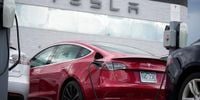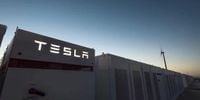The National Highway Traffic Safety Administration (NHTSA) has launched a sweeping new investigation into Tesla’s controversial Full Self-Driving (FSD) system, marking yet another chapter in the ongoing saga over the safety of autonomous vehicle technology. The probe, announced on October 9 and 10, 2025, covers nearly 2.9 million Tesla vehicles equipped with FSD or its supervised and beta variants, following a spate of incidents that have raised alarm bells among regulators, investors, and the driving public alike.
According to filings reviewed by SiliconANGLE and the Associated Press, the latest NHTSA inquiry zeroes in on 58 reported cases where Teslas using FSD committed serious traffic violations—ranging from running red lights to turning onto roads in the wrong direction, sometimes in defiance of clear signage. These incidents have led to at least 14 crashes, over 23 injuries, and even vehicle fires. Particularly troubling are cases in which FSD-enabled Teslas failed to stop at railroad crossings despite oncoming trains, or veered into opposing traffic after a turn.
“While the behaviors under investigation appear to occur most frequently at intersections, NHTSA’s investigation will encompass any other types of situations in which this behavior may arise, such as when traveling adjacent to a lane of opposing traffic or when approaching railroad crossings,” the agency stated. The Office of Defects Investigation will also assess whether drivers were given sufficient warning or time to intervene when the system began to behave unexpectedly. In several cases, drivers reported receiving “little notice to a driver or opportunity to intervene.”
The FSD system at the heart of this probe is classified as Level 2 driver-assistance software, which means it requires the person behind the wheel to remain alert and ready to take control at any moment. Despite this, critics argue that the name “Full Self-Driving” is misleading, giving some drivers a false sense of security and encouraging them to cede too much control to the car. Tesla itself has repeatedly told regulators and courts that drivers must supervise the system at all times, but that hasn’t stopped confusion or controversy.
Seth Goldstein, a Morningstar analyst, put it bluntly: “The ultimate question is, ‘Does the software work?’” Meanwhile, money manager and longtime Tesla investor Ross Gerber didn’t mince words either: “The world has become a giant testing ground for Elon’s concept of full self-driving, and it’s not working.” Gerber went further, suggesting that Tesla should stop calling the technology full self-driving and admit that its vision-only system needs to be supplemented with radar sensors and other hardware. “They have to take responsibility for the fact that the software doesn’t work right and either adjust the hardware accordingly—or somebody is gonna have to come in and say, ‘Hey, you keep causing accidents with this stuff and maybe you should just put it on test tracks until it works.’”
The new investigation is only the latest in a string of federal probes into Tesla’s autonomous driving technologies. Earlier this year, NHTSA opened an inquiry into Tesla’s “summon” feature after a series of minor crashes in parking lots. In August, the agency began investigating why Tesla has allegedly failed to report crashes promptly, as required by law. That same month, a Miami jury found Tesla partly responsible for a deadly 2019 crash involving its Autopilot system (separate from FSD), ordering the company to pay over $240 million in damages. Tesla has vowed to appeal that verdict.
Amid these regulatory headwinds, Tesla’s business fortunes have wavered. The company’s stock fell nearly 3% at one point on October 9, 2025, before closing with a loss of 0.7%, according to AP and SiliconANGLE. Investors have grown increasingly cautious, especially as Tesla’s core vehicle sales have slumped. Some customers have boycotted the brand in response to CEO Elon Musk’s vocal support for President Donald Trump and far-right European candidates, while competitors like China’s BYD have gained market share with affordable, high-quality electric vehicles.
In an attempt to reverse the sales slide, Musk announced on October 7, 2025, that Tesla would introduce two new, stripped-down and cheaper versions of existing models, including its popular Model Y. However, the move failed to excite investors, who were hoping for more dramatic innovation or deeper price cuts. The company’s shares dropped 4.5% in response, as reported by AP and other outlets.
At the same time, Tesla has continued to push forward with its vision for a driverless future. Musk has long promised that existing Tesla vehicles could be transformed into robotaxis—generating income for owners with a simple software update. Yet, as CNBC and SiliconANGLE note, that promise remains unfulfilled. The company recently released FSD version 14.1 to customers, but has also acknowledged that future upgrades will require new hardware, not just software. In Texas and other states, Tesla is testing a Robotaxi-branded ride-hailing service, but every vehicle currently includes a human safety driver or valet ready to intervene.
The stakes are high for Musk and Tesla. The NHTSA’s preliminary investigation could end with no action, a required update, or even a massive recall. For now, the agency is focusing on whether FSD provides adequate warnings and time for drivers to react to hazards, as well as its ability to detect and respond to traffic signals, lane markings, and wrong-way signage. “The investigation is preliminary,” NHTSA emphasized, “explaining that once finished, the result could be no action taken, an update, or even a recall.”
The investigation’s timing is notable, coming on the heels of significant staff cuts at NHTSA earlier this year, reportedly orchestrated by Musk and President Trump as part of a broader federal workforce reduction. As The Washington Post reported, these cuts have hampered the agency’s ability to keep pace with the rapidly evolving world of autonomous vehicles.
For Tesla, the scrutiny comes at a critical juncture. The company is under pressure to deliver on its robotaxi ambitions while maintaining the trust of regulators, investors, and customers. Whether the FSD system can truly live up to its name—or if it will continue to invite regulatory and legal headaches—remains an open question. As Musk aims to roll out hundreds of thousands of driverless taxis in U.S. cities by the end of 2026, the outcome of the NHTSA probe could shape not only Tesla’s future, but the entire trajectory of self-driving cars in America.
As the investigation unfolds, all eyes will be on NHTSA’s findings and Tesla’s next moves. For now, the debate over the safety and readiness of autonomous vehicles is far from settled, and the road ahead looks anything but straightforward.

